Similarities in Science
In science, similarities refer to the comparisons and connections between different objects, organisms, or concepts based on their shared characteristics and properties. Understanding similarities helps scientists categorize, classify, and make predictions about the natural world.
Examples of Similarities in Science
- Animals: Many animals share similarities in body structures, such as the presence of a backbone (vertebrates) or the absence of a backbone (invertebrates).
- Plants: Similarities in plants can be observed in their reproductive structures, such as the presence of flowers in angiosperms or the presence of cones in gymnosperms.
- Physical Properties: Objects can be similar based on their physical properties, such as color, shape, size, and texture.
- Chemical Properties: Substances can be similar based on their chemical composition and reactivity with other substances.
- Processes: Natural processes, such as photosynthesis in plants and respiration in animals, exhibit similarities in their underlying chemical reactions and energy transformations.
Study Guide for Understanding Similarities
Here are some key points to consider when studying similarities in science:
- Identifying Similarities: Look for shared characteristics, behaviors, or functions when comparing different objects, organisms, or concepts.
- Classification: Understand how similarities are used to group and categorize items into specific classes or categories.
- Contrasting Differences: While focusing on similarities, also pay attention to the differences that exist between objects or organisms.
- Importance: Consider the significance of recognizing similarities in making predictions, understanding relationships, and solving problems in science.
- Real-world Examples: Explore real-world examples of similarities in nature, industry, technology, and everyday life to deepen your understanding.
By understanding and appreciating similarities in science, we can gain valuable insights into the interconnectedness of the natural world and the principles that govern its functioning.
[Similarities] Related Worksheets and Study Guides:
.◂Science Worksheets and Study Guides Third Grade. Hands-on Lab Skills/Science Inquiry - 3rd grade
Study Guide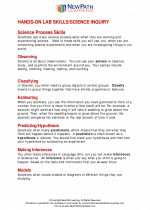 Hands-on Lab Skills/Science Inquiry - 3rd grade
Hands-on Lab Skills/Science Inquiry - 3rd grade  Worksheet/Answer key
Worksheet/Answer key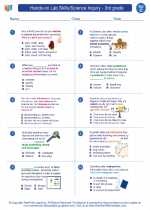 Hands-on Lab Skills/Science Inquiry - 3rd grade
Hands-on Lab Skills/Science Inquiry - 3rd grade  Worksheet/Answer key
Worksheet/Answer key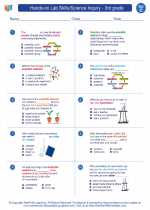 Hands-on Lab Skills/Science Inquiry - 3rd grade
Hands-on Lab Skills/Science Inquiry - 3rd grade  Worksheet/Answer key
Worksheet/Answer key Hands-on Lab Skills/Science Inquiry - 3rd grade
Hands-on Lab Skills/Science Inquiry - 3rd grade  Worksheet/Answer key
Worksheet/Answer key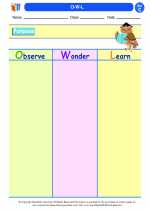 O-W-L
O-W-L  Vocabulary/Answer key
Vocabulary/Answer key Hands-on Lab Skills/Science Inquiry - 3rd grade
Hands-on Lab Skills/Science Inquiry - 3rd grade  Vocabulary/Answer key
Vocabulary/Answer key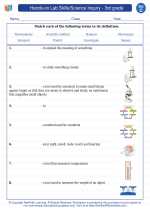 Hands-on Lab Skills/Science Inquiry - 3rd grade
Hands-on Lab Skills/Science Inquiry - 3rd grade 

 Worksheet/Answer key
Worksheet/Answer key
 Worksheet/Answer key
Worksheet/Answer key
 Worksheet/Answer key
Worksheet/Answer key
 Worksheet/Answer key
Worksheet/Answer key
 Vocabulary/Answer key
Vocabulary/Answer key
 Vocabulary/Answer key
Vocabulary/Answer key

The resources above cover the following skills:
Science as Inquiry and Process: A student should understand and be able to apply the processes and applications of scientific inquiry. A student who meets the content standard should:
Develop an understanding of the processes of science used to investigate problems, design and conduct repeatable scientific investigations, and defend scientific arguments.